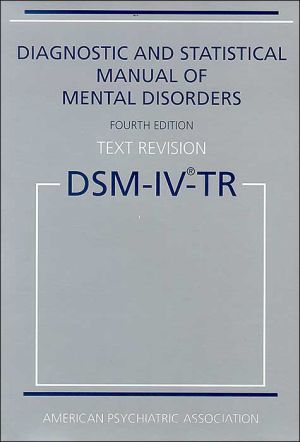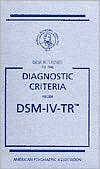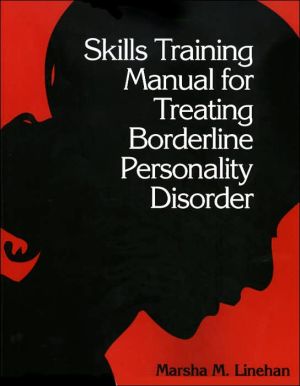Battered Woman
"A major contribution to this subject. She is thorough, practical, compassionate, and authoritative. It is a reading must."—Phyllis Chesler\ \ \ "A major contribution to this subject. she is thorough, practical, compassionate and authoritative."--Phyllis Chesler\
Search in google:
"A major contribution to this subject. She is thorough, practical, compassionate, and authoritative. It is a reading must."—Phyllis Chesler New York Times Book Review A sensible, cpmpassionate, feminist book.
Battered Woman\ Myths and Reality\ The battering of women, like other crimes of violence against women, has been shrouded in myths. All of the myths have perpetuated the mistaken notion that the victim has precipitated her own assault. Some of them served as a protection against embarrassment. Others were created to protect rescuers from their own discouragement when they were unsuccessful in stopping the brutality. It is important to refute all the myths surrounding battered women in order to understand fully why battering happens, how it affects people, and how it can be stopped.\ The battered woman is pictured by most people as a small, fragile, haggard person who might once have been pretty. She has several small children, no job skills, and is economically dependent on her husband. It is frequently assumed she is poor and from a minority group. She is accustomed to living in violence, and her fearfulness and passivity are emphasized above all. Although some battered women do fit this description, research proves it to be a false stereotype.\ Most battered women are from middle-class and higher income homes where the power of their wealth is in the hands of their husbands. Many of them are large women who could attempt to defend themselves physically. Not all of them have children; those who do do not necessarily have them in any particular age group. Although some battered women are jobless, many more are highly competent workers and successful career women. They include doctors, lawyers, corporation executives, nurses, secretaries, full-time homemakers, and others. Battered women are found in all age groups, races, ethnic and religious groups, educationallevels, and socioeconomic groups. Who are the battered women? If you are a woman, there is a 50 percent chance it could be you!\ MYTH NO. 1: THE BATTERED WOMAN SYNDROME AFFECTS ONLY A SMALL PERCENTAGE OF THE POPULATION.\ Like rape, the battering of American women is a seriously underreported crime. Data on wife beating are difficult to obtain because battering generally occurs at night, in the home, without witnesses. The statistics on battered women are buried in the records of family domestic disturbance calls to police departments, in emergency room records in hospitals, and in the records of social service agencies, private psychologists, and counselors. The United States Commission on Civil Rights recently completed an investigation which supports the suspicion that police records on battered women are inaccurately low owing to poor police reporting techniques. My personal estimate is that only one in ten women report battering assaults.\ Marjory Fields, a New York City attorney who specializes in battered women, reports that of 500 women represented in divorce actions in Brooklyn in 1976, 57.4 percent complained of physical assaults by their husbands. They had suffered these assaults for approximately four years prior to seeking the divorce. Of 600 divorcing wives in Cleveland, according to a study by Levinger, 36.8 percent reported physical abuse by their husbands. The first epidemiological study of battered women undertaken in this country, by sociologists Murray Straus, Richard Gelles, and Susan Steinmetz, reported that a physical assault occurred in 28 percent of all American homes during 1976. This statistic, nearly one third of all families, is certainly evidence that the battered woman problem is a widespread one.\ MYTH NO. 2: BATTERED WOMEN ARE MASOCHISTIC.\ The prevailing belief has always been that only women who "liked it and deserved it" were beaten. In a study of battered wives as recently as twenty years ago, it was suggested that beatings are solicited by women who suffer from negative personality characteristics, including masochism. "Good wives" were taught that the way to stop assaults was to examine their behavior and try to change it to please men: to be less provocative, less aggressive, and less frigid. There was no suggestion that provocation might occur from other than masochistic reasons, that aggressiveness might be an attempt to ward off further assault, and that frigidity might be a very natural result of subjection to severe physical and psychological pain. The burden of guilt for battering has fallen on the woman, and the violent behavior of the male has been perpetuated. The myth of the masochistic woman is a favorite of all who endeavor to understand the battered woman. No matter how sympathetic people may be, they frequently come to the conclusion that the reason a battered woman remains in such a relationship is that she is masochistic. By masochism, it is meant that she experiences some pleasure, often akin to sexual pleasure, through being beaten by the man she loves. Because this has been such a prevailing stereotype, many battered women begin to wonder if they are indeed masochistic.\ MYTH NO. 3: BATTERED WOMEN ARE CRAZY.\ This myth is related to the masochism myth in that it places the blame for the battering on the woman's negative personality characteristics. Battered women's survival behaviors have often earned them the misdiagnosis of being crazy. Unusual actions which may help them to survive in the battering relationship have been taken out of context by unenlightened medical and mental health workers. Several of the women in this sample reported being hospitalized for schizophrenia, paranoia, and severe depression. One woman who told of hearing voices which told her to kill her husband had received numerous electroshock therapy treatments. But just listening to her describe her husband's brutal treatment made her hallucination very understandable. Many women reported being given heavy doses of anti-psychotic medications by doctors who were responding to their overt symptoms rather than attempting to understand their family situations. It is not clear whether these women were overtly psychotic at the time of their reported diagnoses. As a clinical psychologist, I can state that at the time I interviewed these women, there was insufficient evidence of such disorders. One woman was interviewed shortly after being released from a state hospital. Arrangements had been made for her to go to a temporary shelter, legal assistance was provided to initiate divorce proceedings, and her batterer was refused knowledge of her whereabouts. Her mental health improved markedly within days. I wonder how many other women who have been mislableled as mentally ill were really attempting to cope with a batterer. After listening to their stories, I can only applaud their strength in...\ Battered Woman. Copyright (c) by Lenore E. Walker . Reprinted by permission of HarperCollins Publishers, Inc. All rights reserved. Available now wherever books are sold.
IntroductionixPrologue: The Story of Anne1Part IPsychology of the Battered WomanIntroduction111Myths and Reality182The Psychosocial Theory of Learned Helplessness423The Cycle Theory of Violence55Part IICoercive Techniques in Battering RelationshipsIntroduction714Physical Abuse785Sexual Abuse1076Economic Deprivation1277Family Discord1458Social Battering165Part IIIThe Way OutIntroduction1859Safe Houses19110Legal and Medical Alternatives20511Psychotherapy22712Designing a New Tomorrow251Resources260Index261
\ Los Angeles TimesAdroitly describes and documents the behavior syndrome that glues together a charming but violence-prone man and a loving woman in a guilt-ridden cycle.\ \ \ \ \ New York Times Book ReviewA sensible, cpmpassionate, feminist book.\ \








